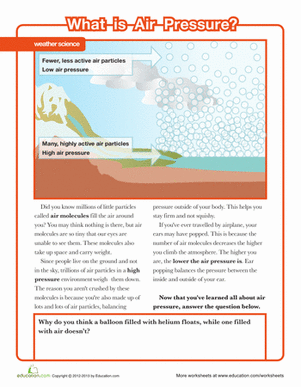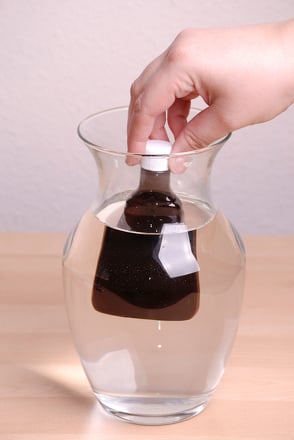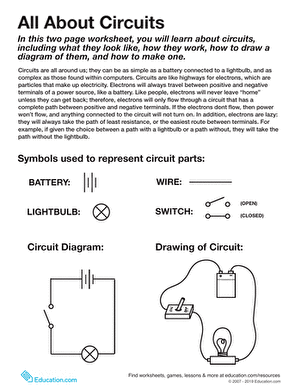Science project
All About Air Pressure
Difficulty
Easy
Cost
Minimal
Safety Issues
None Material Availability
All materials readily available.
Project Time Frame
3-4 weeks Objective
This project explores the nature of air pressure. The goals of this project are:
- To discover the applications of air pressure.
- To develop exciting new demonstrations of air pressure.
Materials and Equipment
- Computer with Internet access
- Color printer
- Digital camera
- Typical office/hobby/hardware/craft supplies (paper, poster board, glue, etc.)
- Leaf blower and/or hand-held blow dryer
- Toilet paper
- Latex balloons
- Plastic drinking straws
- Raw potato
- Lemon
- Mason jar
All materials can be found in your home, at local stores, or on ebay.
Introduction
Air pressure is the amount of air being forced against a surface. It's the reason why planes, birds and insects fly. It's the reason why balloons and bubbles float. In this project we find surprising ways to demonstrate air pressure, and discuss the ways in which air pressure is used, in both nature and technology.
Research Questions
- How do airplanes stay in the air?
- How does a balloon float?
- How else can we use air pressure?
Terms and Concepts to Start Background Research
- Bernoulli's Principle
- Gravity
Experimental Procedure
- Read overview of relevant topics (see bibliography below and terms listed above)
- Address all of the above terms and research questions.
- Search and print out interesting images depicting devices that use air pressure.
- Take your own photographs throughout the course of the experiment.
- Place a raw potato on the table.
- Holding the straw near the bottom, try to stab the potato.
- Now hold another straw so that your thumb securely covers the hole on top, and try again to penetrate the potato. Observe the difference and figure out why.
- Next, carefully cut off a large piece of the lemon peel, and cut out the shape of a rocket or a fish or anything you like from the peel.
- Cut off the neck of a latex balloon.
- Fill mason jar with water all the way to the top, and float the lemon peel on the water.
- Cover the jar tightly with the balloon, and tightly secure it with a rubber band.
- With your finger, gently press down on the balloon-lid, and watch the lemon peel dive to the bottom. Remove your finger and watch it shoot back up to the top.
- Carefully record all observations.
- Try the experiments described in the link below, using the materials mentioned above.
- Make up your own air pressure demonstrations with balloons, bendy straws, ping pong balls, or whatever you can dream up.
- Analyze your data.
- Interpret your findings in a detailed report.
- Include interesting photos, diagrams and demonstrations in your science fair display.
Bibliography
- http://www.stevespanglerscience.com/experiment/00000037 (Fun experiment!)
- http://www.kids-science-experiments.com/cat_pressure.html (Other experiments)
- Internet searches of your choosing. Search words or terms listed here, or make up your own phrases. Click on any results you find interesting. Have fun surfing the net!
Disclaimer and Safety Precautions
Education.com provides the Science Fair Project Ideas for informational purposes only. Education.com does not make any guarantee or representation regarding the Science Fair Project Ideas and is not responsible or liable for any loss or damage, directly or indirectly, caused by your use of such information. By accessing the Science Fair Project Ideas, you waive and renounce any claims against Education.com that arise thereof. In addition, your access to Education.com's website and Science Fair Project Ideas is covered by Education.com's Privacy Policy and site Terms of Use, which include limitations on Education.com's liability.
Warning is hereby given that not all Project Ideas are appropriate for all individuals or in all circumstances. Implementation of any Science Project Idea should be undertaken only in appropriate settings and with appropriate parental or other supervision. Reading and following the safety precautions of all materials used in a project is the sole responsibility of each individual. For further information, consult your state's handbook of Science Safety.
Education.com provides the Science Fair Project Ideas for informational purposes only. Education.com does not make any guarantee or representation regarding the Science Fair Project Ideas and is not responsible or liable for any loss or damage, directly or indirectly, caused by your use of such information. By accessing the Science Fair Project Ideas, you waive and renounce any claims against Education.com that arise thereof. In addition, your access to Education.com's website and Science Fair Project Ideas is covered by Education.com's Privacy Policy and site Terms of Use, which include limitations on Education.com's liability.
Warning is hereby given that not all Project Ideas are appropriate for all individuals or in all circumstances. Implementation of any Science Project Idea should be undertaken only in appropriate settings and with appropriate parental or other supervision. Reading and following the safety precautions of all materials used in a project is the sole responsibility of each individual. For further information, consult your state's handbook of Science Safety.













